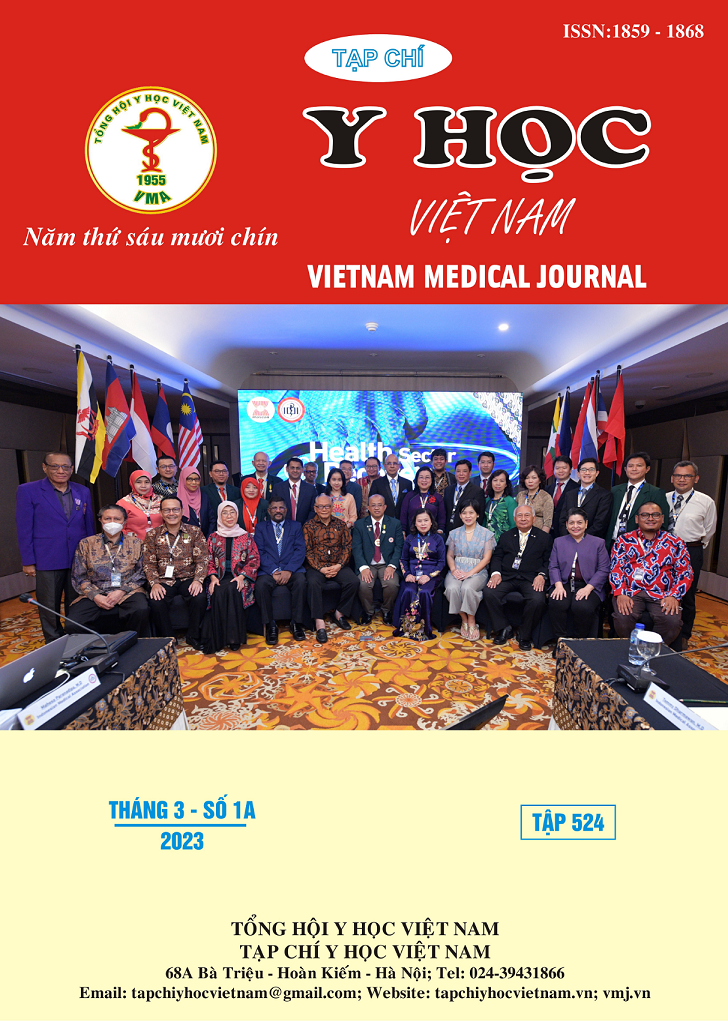AFFECTING FATORS FOR THE SUCCESS OF MICROPULSE TRANSSCLERAL CYCLOPHOTOCOAGULATION IN GLAUCOMA TREATMENT
Main Article Content
Abstract
Purpose: Evaluating factors related to the success of micropulse transscleral cyclophotocoagulation in treating glaucoma. Patients and Methods: Uncontrolled clinical trial was conducted with glaucoma patients who met one of the following criteria: Patients with uncontrolled IOP despite maximum lowering IOP agents, patients with previously failed surgeries or patients with a high risk of failure for filtering surgery. Treatment results are evaluated at 1 week, 1 month, and 3 months after the first laser session. Patients who do not achieve the desired intraocular pressure may consider a second additional laser at least 1 month after the first session. The rate of success and factors related to the overall success rate are evaluated at 3 month after the first laser session, including age, gender, number of failed surgeries, glaucoma type, onset time of symptom and pre-treatment IOP. Results: 26 eyes of 25 patients with mean age of 50.2 ± 25.7 years were included in the study. Mean preoperative IOP was 37.7 ± 10.5 mmHg which was reduced to 20.6 ± 8.2 mmHg after 3 months (reduction of 45,4%)The success rate between different types of glaucoma is significantly different, the lowest is neovascular glaucoma group and the highest is glaucoma group secondary to inflammation, after trauma, after surgery to treat retinal detachment. Patients with the disease duration less than 1 month have the lowest success rate, followed by the group that have been diagnosed for more than 1 year and the highest success rate was the group which had disease duration from 1 month to 1 year. IOP before treatment has an effect on the success of surgery, the higher the preoperative IOP, the lower the chance of success. Conclusion: Glaucoma type, onset time of symptom and pre-treatment IOP affect the results of micropulse transscleral laser photocoagulation treatment. No association was found between other factors such as age, gender, number of failed surgeries before laser with the overall success of treatment.
Article Details
Keywords
transscleral photocoagulation, micropulsed, glaucoma type, onset time, pre-treatment IOP.
References
2. Zaarour K, Abdelmassih Y, Arej N, Cherfan G, Tomey KF, Khoueir Z. Outcomes of Micropulse Transscleral Cyclophotocoagulation in Uncontrolled Glaucoma Patients. J Glaucoma. 2019;28(3):270-275.
3. Kuchar S, Moster MR, Reamer CB, Waisbourd M. Treatment outcomes of micropulse transscleral cyclophotocoagulation in advanced glaucoma. Lasers Med Sci. 2016;31(2):393-396.
4. Schlote T, Derse M, Zierhut M. Transscleral diode laser cyclophotocoagulation for the treatment of refractory glaucoma secondary to inflammatory eye diseases. Br J Ophthalmol. 2000;84(9):999-1003.
5. Schlote T, Grüb M, Kynigopoulos M. Long-term results after transscleral diode laser cyclophotocoagulation in refractory posttraumatic glaucoma and glaucoma in aphakia. Graefes Arch Clin Exp Ophthalmol Albrecht Von Graefes Arch Klin Exp Ophthalmol. 2008;246(3):405-410.
6. Ramli N, Htoon HM, Ho CL, Aung T, Perera S. Risk factors for hypotony after transscleral diode cyclophotocoagulation. J Glaucoma. 2012;21(3):169-173.
7. Zhang S hua, Dong F tian, Mao J, Bian A ling. Factors Related to Prognosis of Refractory Glaucoma with Diode Laser Transscleral Cyclophotocoagulation Treatment. Chin Med Sci J. 2011;26(3):137-140.
8. Clement CI, Kampougeris G, Ahmed F, Cordeiro MF, Bloom PA. Combining phacoemulsification with endoscopic cyclophotocoagulation to manage cataract and glaucoma. Clin Experiment Ophthalmol. 2013; 41(6):546-551.
9. Vernon SA, Koppens JM, Menon GJ, Negi AK. Diode laser cycloablation in adult glaucoma: long-term results of a standard protocol and review of current literature. Clin Experiment Ophthalmol. 2006; 34(5):411-420.


